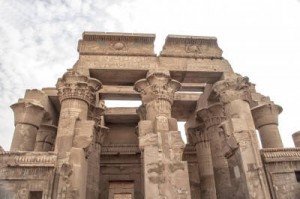Is there archaeological evidence to support the authenticity of the Bible? Are there actual archaeological digs that have unearthed artifacts that are relevant to the recorded stories in the Bible? Here is an actual look at real evidence that has been discovered by archaeologists.
What is Archaeology?
Archaeology is a science. It is the scientific study of material remains that authenticate the remains of human activities, civilizations, and life. The finds include fossils, artifacts like tools or utensils, scrolls, hieroglyphs, weapons of war, structures and so forth. Archaeology is the discovery of empirical evidence that verifies what has been recorded in historical accounts, traditions, and by eye witness testimonies that have been passed down through generations. This branch of science can produce concrete validations of what has happened or occurred in the past, even thousands of years ago. Archaeology is like an underground history book; the deeper you go, the further you go back into time.
Archaeology and the Bible
The Bible is a book that is full of historical accounts covering thousands of years and multiple nations and peoples. Every year there is a significant find that is tied to recorded events that are written down in both the Old Testament and the New Testament. Due to the massive amounts of archaeological finds, this article can never hope to cover all of these finds that have been unearthed over the last few thousand years. The mountainous collection of artifacts show indisputable evidence that the Bible is true and what was recorded actually happened in the places and times that the Bible states that they did. The many thousands of archaeological finds have provided solid evidence for the reliability of the Scriptures and biblical scholars have used much of this evidence to further their study of the Bible.
Every year we find another significant find in the Middle East, Africa, and in Europe. These artifacts that have been unearthed are specifically mentioned in the Old Testament and the New Testament. There is no way possible that we can mention every single one of these artifacts in one article. It would take hundreds of books to hold all of the finds that validate the Bible as a true historical record. Let’s look at only a few since space does not allow us to include them all.
Herod’s Inscription
Ehud Netzer found a piece of broken pottery at Masada with an inscription that read, “Herod the Great King of the Jews” and dated to the time that he was ruling in 19 B.C. which fit’s the time period mentioned in the Bible (Luke 1:5, Matthew 2).
Caiaphas’ Ossuary
In November, 1990, the bones of Caiaphas the high priest were found in Peace Forest, just south of Jerusalem in an ossuary with the name Caiaphas on it. The Jewish historian Josephus mentioned Josephus Caiaphas, a high priest who served around A.D. 18-36. This time period fits exactly the time that Jesus was convicted by the Sanhedrin in Jerusalem and later crucified by the Romans.
Seal of Abdi
A seal with the inscription “Belonging to Abdi servant of Hoshea” was found in Israel and dated to the 8th century B.C. Hoshea was the very last King of Israel before the Assyrians invaded and conquered the nation. The inscription of the seal matches the date of Hoshea’s reign from 731-722 B.C. which fits perfectly with that which is recorded in the Old Testament.
Babylonian Empire
The ancient capital of the Babylonian Empire covers nearly 3,000 acres and is about 55 miles south of current-day city of Baghdad in Iraq. These discovered ruins include the famous ziggurat structures, the Tower of Babel, and the Palace of King Nebuchadnezzar. The ruins describe what is written in the Old Testament, exactly as it was found in archaeological finds.
The House of David
A team of archaeologists headed by Dr. Avraham Biran, working in the Upper Galilee region, found written references to “The House of David” in both the Hebrew and Aramaic languages. Dr. Biran commented that, “This is the earliest archaeological mention of King David.” These inscriptions also mention part of the Royal lineage of Israel and other Jewish Kings mentioned in the Old Testament and in the exact order that they are mentioned in 1 and 2 Kings and 1 and 2 Chronicles.
Herod’s Jewish Temple
In excavations near Jerusalem in 2009, archaeologists uncovered what they believe to be part of a much larger network of quarries used by Herod in the city. The ancient quarry is where they believe King Herod extracted stones for the construction of the Jewish Temple which was dated around 2,000 years ago. This fits perfectly with the account of the New Testament gospels.
The Elba Archive
In the 1970 the Elba Archive was discovered in Northern Syria. Contained in this archive is a listing of the patriarch’s accounts of places that they lived. For example, these documents, dated around 2300 B.C., mention Canaan and the customs of those who lived in the time of Moses as described in the Old Testament. Clay tablets from Mari and Nuzi give much the same information and the time period of these archives and tablets are consistent with the patriarchs mentioned in Genesis.
The Granite Column of Solomon
An ancient column that is credited to Solomon mentions Mizoram (Hebrew name for Egypt) and the words in Hebrew of death, water, Edom, Yahweh, and Solomon. Interestingly, this column was found near the Red Sea where tradition has it was the place where Israel crossed over at.
Conclusion
The number of archaeological support for the Bible continues to swell, year after year. Today, well over 50,000 digs at 30,000 different locations have been excavated. These finds continue to provide substantial support of the Bible’s written record. Some of the finds include Belshazzar, King Darius, and King Cyrus’ being mentioned by name. What were once thought to be mythological empires mentioned in the Old Testament, like the Hittite’s, have been found to have existed after all. King David’s reign was found recorded on ancient Egyptian inscriptions, evidence of the Regal House of Nebuchadnezzar, and a stone tablet bearing Pontius Pilate’s name.
Archaeology is demonstrating that the Bible is truly reliable and accurate as written. The historical accounts of the Bible match the archaeological discoveries with amazing accuracy. Archaeology supports what the Bible records and more archaeological treasures seem to arrive every year now. These finds are not surprising to Christians but for those who don’t believe the Bible, it is indisputable evidence that the Bible is true and Word of God is certain. In this, there can be no doubt.
Looking for some more related articles?
Take a look at these other similar type articles:
New International Version Bible (NIV)
THE HOLY BIBLE, NEW INTERNATIONAL VERSION®, NIV® Copyright © 1973, 1978, 1984, 2011 by Biblica, Inc.™ Used by permission. All rights reserved worldwide









 Welcome to What Christians Want To Know! The mission of this site is to equip, encourage, and energize Christians. Look for regular updates including Bible Verses, Bible Stories, Christian Quotes, Christian Answers, and much more. Find out
Welcome to What Christians Want To Know! The mission of this site is to equip, encourage, and energize Christians. Look for regular updates including Bible Verses, Bible Stories, Christian Quotes, Christian Answers, and much more. Find out 









